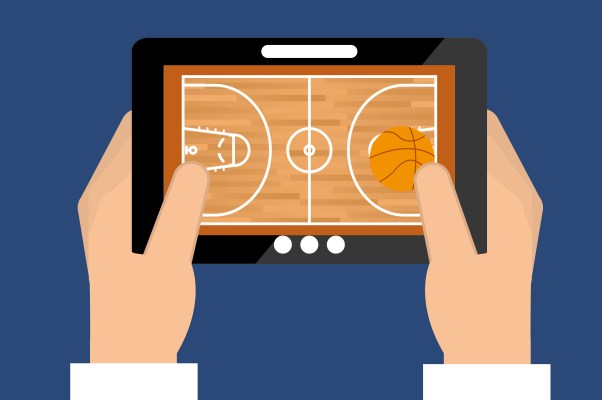Editor’s note: Augusto Marietti is the CEO of Mashape.
There’s a 21st century arms race happening across industries as organizations of all stripes look to unlock the true potential of their digital assets through APIs. For that data to generate value, it must first find new audiences. And to reach those new consumers and markets, you must first reach developers. While it can feel like a leap of faith, giving developers access to rich organizational data is necessary for innovation and a vital step to establishing a healthy long-term data strategy.
So imagine my surprise when I realized that the NCAA does not have a public-facing API available for March Madness. Not an open API, not a closed API. Nothing. They may as well hang a “Developers Not Welcome” sign.
The NCAA seems uninterested in building a developer community and appears to not have any developer relations program to speak of. The same applies to all of the major U.S. sports leagues — the NBA, NFL, MLB, NHL and MLS.
Notoriously stodgy industries like manufacturing, transportation and government actually boast a far more progressive data strategy than massive sports leagues with legions of fans around the world. Why? It starts with the idea that some data is more valuable than others.
The NCAA seems uninterested in building a developer community and appears to not have any developer relations program to speak of.
Shedding the cloak of “proprietary” that veils organizational data can feel like losing a shield, but it isn’t. Organizations that feel competitors nipping at their heels are more hungry for innovation and more likely to shake the stubborn and false idea that granting access to your data hurts your ability to profit from it.
This myth is slowly suffocating under a growing mountain of evidence that shows open APIs are good for business, and organizations that are paying attention are seeing results. Just ask the airline and hotel industries, for whom sites like Kayak and Hotels.com represent huge revenue streams. APIs have become a core business driver for any organization able to see the forest for the trees.
Right now, if a developer wants to pull data from the NCAA tournament into a web or mobile app they’ve built, the only way to do it is by either illegally scraping the data from a third-party site like ESPN or for the API provider to manually enter data after each game is completed. This is crazy. ESPN and other huge sports media organizations have APIs, but they’re private. There is no public API access, so it’s only available for internal use or “strategic partners,” a label that comes with a hefty price tag.
In case you were wondering why so many of your sports apps are one-dimensional and often unreliable, here’s how the system currently works: Leagues keep data under lock and key, selling exclusive rights to giant monopolistic data providers, who in turn sell it per subscription to companies or individuals that can pay the hefty prices to build sports integration into their apps.
These data providers make so much money pushing XML files over FTP that they don’t even have a REST API. This data dump method is extremely old-fashioned, and when mistakes happen (and they happen a lot), there is no recovery. They simply send patch data files and expect the implementer to post-process them.
An engineer I know worked with the International Olympic Committee (IOC) a few years ago — they awarded license deals to broadcasters with “conditions” to use “preferred vendors” to serve up content and build implementation. Despite having a full tech team with a full tech stack ready to go, the IOC enforced a license contract to use a vendor in Europe, which ended up costing the organization he was working with millions of dollars. To top it off, they still didn’t use APIs, opting to leverage 15-year-old technology instead.
A growing number of sports data upstarts are entering the market and disrupting the sector by introducing flexible data APIs and reasonable pricing, but they are being pushed away from major sports. Favored contracts and preferred vendors are quite literally relegating newcomers to the minor leagues and smaller niche sports.
The NCAA, the IOC and the major sports leagues lack vision. APIs would create new revenue streams, driving unexpected insights and added dimensions to a league or team’s data, enabling these organizations to reach and interact with new fans around the country and the world.
Imagine a bracket-predicting engine, or real-time matchup-based analytics incorporating head-to-heads at key positions while considering all the nagging injuries and minutes played the previous night by each of the players on the court. There are countless cool and obscure statistics one could come up with if developers were granted access to the data.
APIs would create new revenue streams, driving unexpected insights and added dimensions to a league or team’s data.
The jocks have learned a lot from the nerds. Moneyball-type analytics are now widely used across organizations to inform in-game decisions and long-term recruiting strategies. But it’s only a matter of time before sensors are implanted in game balls and uniforms, and these thousands of new data streams from wearable technologies will have a big impact on the sports world.
Every league and every team needs a professional-grade API, and they must move quickly. Attracting developers shouldn’t be a problem, and opening up their APIs — even to a controlled group of developers — could yield fast, surprising and impactful results. But the leagues must first show they’re interested.
